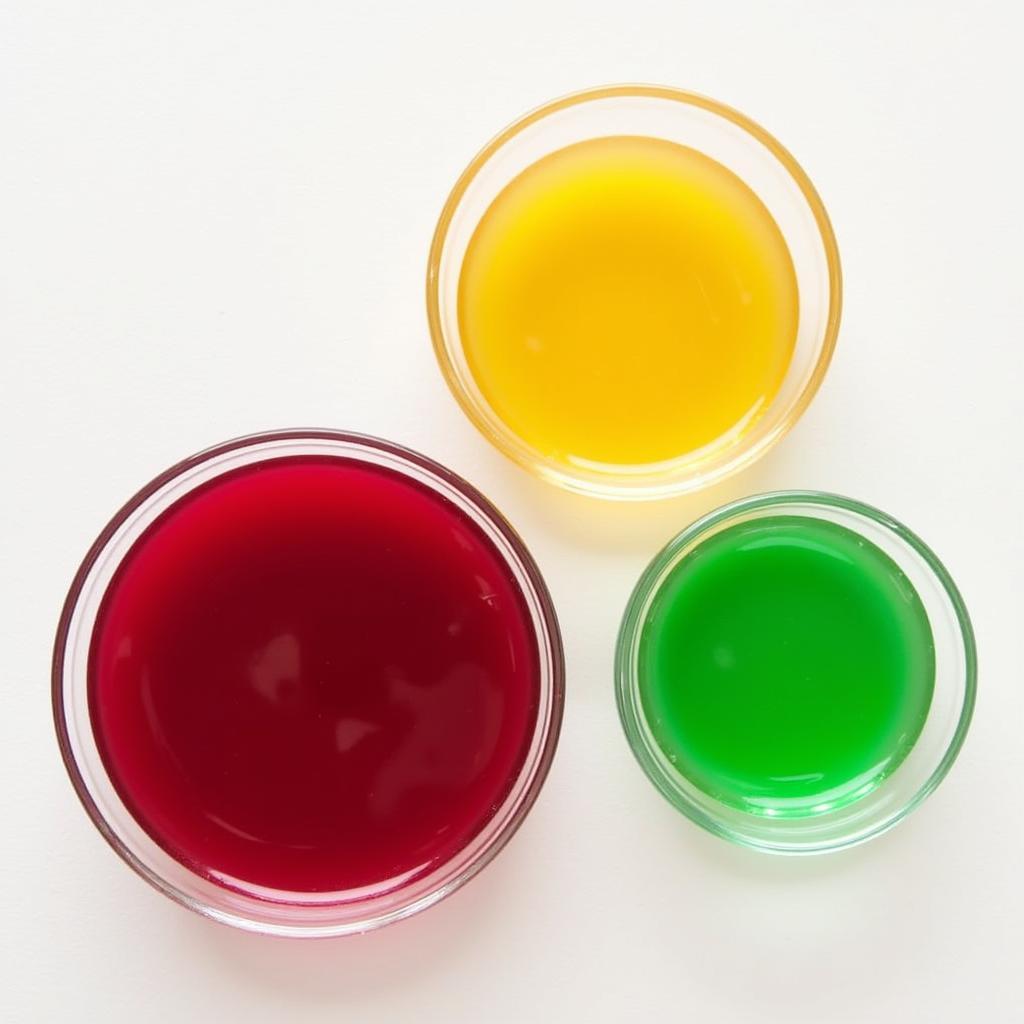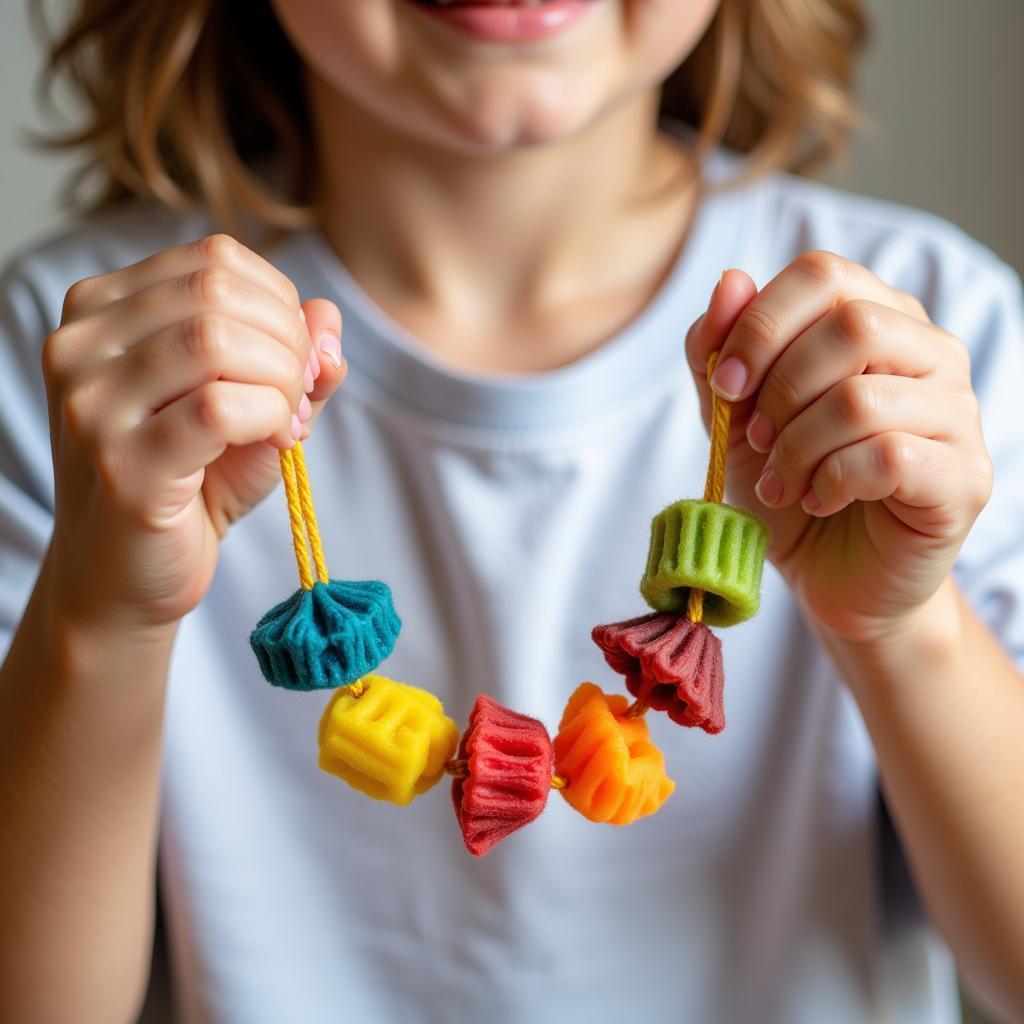Want to add a vibrant twist to your next pasta night? Making colorful pasta is a fun and creative activity that’s surprisingly easy. Whether you’re cooking with kids, looking for unique craft supplies, or simply want to impress your dinner guests, learning how to make colorful pasta opens up a world of possibilities.
Unleashing the Rainbow: Coloring Your Pasta
The beauty of coloring pasta lies in its simplicity. With just a few basic ingredients, you can transform ordinary noodles into an edible masterpiece. Let’s dive into the most popular methods:
Using Food Coloring: A Vibrant Choice
Food coloring is a readily available option that delivers intense, long-lasting color. Here’s how to use it:
- Cook the Pasta: Prepare your pasta according to package directions. Drain and rinse with cold water to stop the cooking process.
- Mix the Colors: In a bowl, combine a tablespoon of water with several drops of food coloring. You can create separate bowls for different colors.
- Color the Pasta: Add the cooked pasta to the bowls and toss gently until evenly coated. For a deeper hue, let the pasta sit in the coloring for a few minutes.
- Dry and Enjoy: Spread the colored pasta on a baking sheet lined with parchment paper and allow it to air dry completely before using.
Natural Food Dye: Embracing Earthy Tones
For a more natural approach, explore the vibrant hues of fruits and vegetables:
- Choose Your Dye: Beetroot creates vibrant pinks, turmeric yields sunny yellows, and spinach lends a lovely green.
- Blend and Strain: Blend your chosen ingredient with a small amount of water until smooth. Strain the mixture through a fine-mesh sieve to remove any solids.
- Color the Pasta: Similar to using food coloring, toss the cooked pasta with the natural dye until coated. The longer the pasta sits, the more intense the color.
- Dry and Admire: Dry the pasta as mentioned above, and marvel at the beautiful, natural shades.
 Bowls of natural food dyes made from beetroot, turmeric and spinach
Bowls of natural food dyes made from beetroot, turmeric and spinach
Beyond the Bowl: Creative Uses for Colorful Pasta
While colored pasta brightens any meal, its potential extends far beyond dinner plates:
- Sensory Play: Create a captivating sensory bin for toddlers using colored pasta, scoops, and small containers.
- DIY Crafts: From homemade necklaces to colorful mosaics, the possibilities are endless.
- Festive Decorations: Use colored pasta to create festive garlands, ornaments, or eye-catching centerpieces.
 A child proudly displaying a colorful pasta necklace they made.
A child proudly displaying a colorful pasta necklace they made.
Tips for Perfect Colored Pasta
- Avoid Overcooking: Slightly undercook the pasta to prevent it from becoming mushy during the coloring process.
- Wear Gloves: Protect your hands from staining by wearing gloves while mixing and handling the colors.
- Get Creative: Experiment with different color combinations and pasta shapes for unique and visually appealing results.
- Store Properly: Once completely dry, store your colorful pasta in an airtight container at room temperature.
Colorful Pasta: A World of Creativity Awaits
Learning how to make colorful pasta unlocks a world of culinary and creative opportunities. Whether you’re adding a pop of color to your meals, engaging your child’s senses, or crafting unique DIY projects, colored pasta is a versatile and enjoyable medium. So gather your supplies, unleash your inner artist, and let the colorful pasta adventures begin!
FAQs
1. Can I color gluten-free pasta?
Absolutely! The coloring techniques mentioned above work equally well with gluten-free pasta varieties.
2. How long does colored pasta last?
When stored properly in an airtight container, colored pasta can last for several weeks.
3. Can I cook with the colored pasta after it’s dried?
While you can technically cook with colored pasta after it’s dried, the colors might fade slightly. It’s best to use colored pasta for cold dishes, salads, or crafts.
4. What are some other natural dyes I can try?
Besides beetroot, turmeric, and spinach, you can experiment with blueberries (purple), red cabbage (blue), paprika (orange), or carrot juice (orange).
5. Can I use liquid watercolors to color pasta?
While liquid watercolors can create vibrant colors, they are not food-safe. Stick to food coloring or natural dyes for edible pasta projects.
Need Help with Your Colorful Creations?
For personalized advice on creating vibrant pasta projects or exploring a world of color for your home, contact Color Box Hanoi at Phone Number: 0373298888, Email: [email protected] or visit us at 86 Cầu Giấy, Hà Nội. Our team is available 24/7 to assist you with all your color-related needs. For more creative inspiration, check out our other articles: how to make colored pasta, how to make colored rice for sensory bin, how to color pasta naturally, how to make colored rice sensory bin, and how to color dry pasta.

